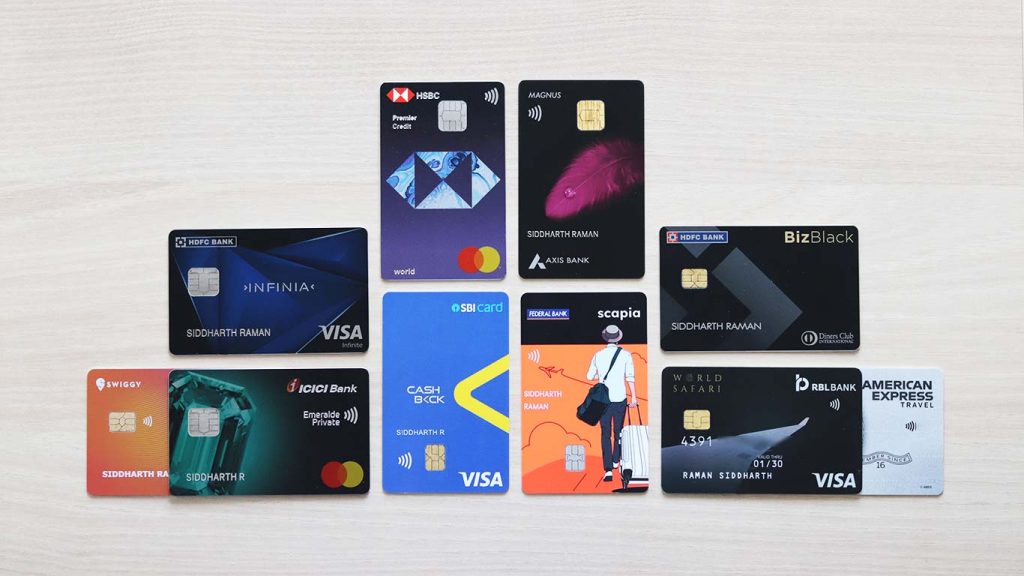- Introduction
- Why You Need One of the Best Credit Cards for Bad Credit
- Understanding Bad Credit: What You Need to Know
- 11 Best Credit Cards for Bad Credit in 2025
- 1. OpenSky® Secured Visa® Credit Card
- 2. Discover it® Secured Credit Card
- 3. Capital One Platinum Secured Credit Card
- 4. Credit One Bank® Platinum Visa® for Rebuilding Credit
- 5. Chime Credit Builder Secured Visa® Credit Card
- 6. Indigo® Platinum Mastercard®
- 7. Milestone® Gold Mastercard®
- 8. Petal® 2 “Cash Back, No Fees” Visa® Credit Card
- 9. First Progress Platinum Elite Mastercard® Secured Credit Card
- 10. Surge Mastercard®
- 11. Merrick Bank Secured Visa®
- How to Choose the Best Credit Cards for Bad Credit for YOUR Situation
- Step-by-Step: How to Use the Best Credit Cards for Bad Credit to Rebuild Your Score
- Step 1: Choose Your Card (30 minutes)
- Step 2: Pre-Qualify Without Hurting Your Credit (15 minutes)
- Step 3: Submit Your Application (20 minutes)
- Step 4: Fund Your Security Deposit (if applicable)
- Step 5: Activate and Set Up Auto-Pay (15 minutes)
- Step 6: Use Your Card Strategically (Ongoing)
- Step 7: Monitor Your Progress (Monthly)
- Critical Mistakes to Avoid with the Best Credit Cards for Bad Credit
- Secured vs. Unsecured Credit Cards: What’s the Difference?
- How Long Does It Take to Rebuild Credit?
- Alternative Options If You Can’t Get Approved
- Frequently Asked Questions
- What credit score do I need for the best credit cards for bad credit?
- Will applying hurt my credit score?
- How fast can I rebuild my credit?
- Should I get a secured or unsecured card?
- Can I get approved with a bankruptcy on my record?
- What’s the minimum security deposit?
- Do these cards charge interest?
- When will I qualify for better cards?
- Conclusion: Take Control of Your Financial Future Today
- Additional Resources
Introduction
Searching for the best credit cards for bad credit can feel overwhelming, especially when you’ve faced rejection after rejection. But here’s the truth: having bad credit doesn’t mean you’re out of options.
Whether your credit score is 500, 550, or 600, there are credit cards specifically designed to help you rebuild your financial reputation. The best credit cards for bad credit offer a second chance to establish positive payment history, increase your credit score, and regain financial control.
In this comprehensive guide, you’ll discover the 11 best credit cards for bad credit, learn how to choose the right card, avoid common mistakes, and understand exactly how to rebuild your credit starting today. No judgment, just actionable solutions.
Why You Need One of the Best Credit Cards for Bad Credit
Rebuild Your Credit Score Fast
Using the best credit cards for bad credit responsibly can increase your credit score by 50-100 points within 6-12 months. Payment history accounts for 35% of your FICO score—making on-time payments is the fastest path to credit recovery.
Access Emergency Funds
Even a small credit limit provides a safety net for unexpected expenses. Medical bills, car repairs, or urgent travel become manageable.
Qualify for Better Financial Products
Once you rebuild your credit, you’ll qualify for premium credit cards, lower interest rates on loans, better apartment rentals, and even improved insurance rates.
Build Financial Confidence
Successfully managing one of the best credit cards for bad credit proves to yourself and lenders that you’re financially responsible. It’s empowering.
Understanding Bad Credit: What You Need to Know
What’s Considered Bad Credit?
Credit scores range from 300 to 850. Here’s the breakdown:
- Excellent: 750-850
- Good: 700-749
- Fair: 650-699
- Poor: 600-649
- Bad: 300-599
If your score falls below 650, you’re likely looking for the best credit cards for bad credit.
What Causes Bad Credit?
Common factors include:
- Late or missed payments
- High credit card balances
- Bankruptcy or foreclosure
- Collections accounts
- Short credit history
- Too many hard inquiries
Understanding your situation helps you choose from the best credit cards for bad credit that match your needs.

11 Best Credit Cards for Bad Credit in 2025
1. OpenSky® Secured Visa® Credit Card
Why It’s One of the Best Credit Cards for Bad Credit:
- No credit check required – Guaranteed approval
- Reports to all three credit bureaus
- Low annual fee: $35
- Refundable security deposit: $200-$3,000
Best For: Those with very poor credit (under 550) or bankruptcy history.
How It Works: Your security deposit becomes your credit limit. Make on-time payments, and you’ll see credit score improvements within months.
According to Experian, secured cards are the most effective tool for rebuilding credit because they minimize lender risk while reporting positive payment history.
2. Discover it® Secured Credit Card
Why It’s Among the Best Credit Cards for Bad Credit:
- Earn 2% cash back at gas stations and restaurants (up to $1,000/quarter)
- 1% unlimited cash back on all other purchases
- No annual fee
- Free FICO score tracking
- Automatic reviews for credit line increases
Best For: Bad credit applicants who want rewards while rebuilding.
Security Deposit: $200 minimum
This is the only secured card that offers meaningful cash back rewards, making it unique among the best credit cards for bad credit.
3. Capital One Platinum Secured Credit Card
Why It’s One of the Best Credit Cards for Bad Credit:
- Low initial deposit (as low as $49, $99, or $200 for $200 credit line)
- Potential credit line increases with responsible use
- No annual fee
- Reports to major credit bureaus
Best For: Those with limited funds for deposits.
Unique Feature: Capital One may increase your credit limit without additional deposits after 6 months of on-time payments.
4. Credit One Bank® Platinum Visa® for Rebuilding Credit
Why It’s Among the Best Credit Cards for Bad Credit:
- 1% cash back on eligible purchases
- Pre-qualification available without affecting credit score
- Reports to all three bureaus monthly
- Free online account management
Annual Fee: $0-$99 (varies by creditworthiness)
Best For: Those who want unsecured options with rewards.
Note: Watch for the annual fee and APR terms carefully.
5. Chime Credit Builder Secured Visa® Credit Card
Why It’s One of the Best Credit Cards for Bad Credit:
- No credit check
- No annual fee
- No interest charges
- No security deposit required (works with Chime checking account)
- Reports to major credit bureaus
Best For: Digital-first users who want zero fees.
How It’s Different: You load money into your Credit Builder account, which becomes your spending limit. It’s technically secured but feels like a debit card.
6. Indigo® Platinum Mastercard®
Why It’s Among the Best Credit Cards for Bad Credit:
- Pre-qualification with soft inquiry
- Unsecured option for bad credit
- Quick approval decisions
- Reports to all three bureaus
Annual Fee: $0-$99 first year, $75-$99 after
Best For: Those who prefer unsecured cards and can handle annual fees.
Credit Limit: Typically $300-$1,000 initially
7. Milestone® Gold Mastercard®
Why It’s One of the Best Credit Cards for Bad Credit:
- Unsecured card for damaged credit
- Pre-qualification available
- Fast approval process
- Access to higher credit limits over time
Annual Fee: $35-$99 (first year), $35-$99 (after)
Best For: Rebuilding after bankruptcy or foreclosure.
Processing Fee: $0-$95 one-time
8. Petal® 2 “Cash Back, No Fees” Visa® Credit Card
Why It’s Among the Best Credit Cards for Bad Credit:
- No annual fee
- No security deposit
- 1%-1.5% cash back on eligible purchases
- Considers income and banking history, not just credit score
Best For: Those with thin credit files or alternative credit data.
Unique Approach: Petal uses banking data and cash flow analysis instead of relying solely on credit scores, making it accessible to more applicants.
9. First Progress Platinum Elite Mastercard® Secured Credit Card
Why It’s One of the Best Credit Cards for Bad Credit:
- Choose your credit limit ($200-$2,000)
- No minimum credit score required
- Reports to all three bureaus
- Simple application process
Annual Fee: $29
Best For: Those who want flexibility in choosing credit limits.
Security Deposit: Fully refundable and equals your credit limit
10. Surge Mastercard®
Why It’s Among the Best Credit Cards for Bad Credit:
- Unsecured option for bad credit
- Pre-qualification without hard pull
- Fast decisions
- Credit line increases possible
Annual Fee: $75-$99
Best For: Quick approval when you need credit immediately.
Initial Credit Limit: $300-$1,000
Note: High fees make this a short-term rebuilding option.
11. Merrick Bank Secured Visa®
Why It’s One of the Best Credit Cards for Bad Credit:
- Double your credit line after 7 months of on-time payments
- Low annual fee: $36
- Security deposit: $200
- Path to unsecured card
Best For: Those committed to quick credit line growth.
Graduation Timeline: Potential upgrade to unsecured card after 12 months of responsible use.
How to Choose the Best Credit Cards for Bad Credit for YOUR Situation
Consider These Key Factors:
1. Secured vs. Unsecured
- Secured cards require deposits but offer better approval odds
- Unsecured cards require no deposit but have higher fees and lower limits
2. Fees Structure
Compare these costs:
- Annual fees ($0-$99)
- Processing fees (one-time)
- Monthly maintenance fees
- Foreign transaction fees
3. Credit Reporting
Ensure the card reports to all three bureaus: Experian, Equifax, and TransUnion. This is non-negotiable for rebuilding credit.
4. Credit Limit and Deposit
- Can you afford the security deposit?
- Is the initial credit limit sufficient for your needs?
- Are credit line increases available?
5. Additional Features
- Cash back rewards
- Free FICO score access
- Mobile app quality
- Fraud protection
- Path to upgrade
Step-by-Step: How to Use the Best Credit Cards for Bad Credit to Rebuild Your Score
Step 1: Choose Your Card (30 minutes)
Review the 11 best credit cards for bad credit above. Select 2-3 that match your budget and needs.
Step 2: Pre-Qualify Without Hurting Your Credit (15 minutes)
Many issuers offer pre-qualification with soft credit pulls. Check eligibility before applying.
Step 3: Submit Your Application (20 minutes)
Gather required documents:
- Social Security number
- Government-issued ID
- Proof of income
- Bank account information
Step 4: Fund Your Security Deposit (if applicable)
For secured cards, you’ll need to transfer your deposit (typically $200-$500). This becomes your credit limit.
Step 5: Activate and Set Up Auto-Pay (15 minutes)
Once approved, activate your card immediately. Set up automatic minimum payments to never miss a due date.
Step 6: Use Your Card Strategically (Ongoing)
The 30% Rule: Keep your balance below 30% of your credit limit. For a $500 limit, that’s $150 maximum.
Example:
- Credit limit: $500
- Optimal usage: Under $150
- Pay in full each month
Step 7: Monitor Your Progress (Monthly)
Check your credit score monthly using free tools like Credit Karma, Credit Sesame, or your card’s built-in monitoring.
Expected Timeline:
- 3 months: First credit report update
- 6 months: 20-50 point increase (with perfect payments)
- 12 months: 50-100 point increase
- 18-24 months: Qualify for unsecured premium cards
Critical Mistakes to Avoid with the Best Credit Cards for Bad Credit
Mistake #1: Missing Payments
Even one late payment (30+ days) can drop your score by 60-110 points. Set up auto-pay for at least the minimum.
Mistake #2: Maxing Out Your Card
High credit utilization (over 30%) signals risk to lenders. Keep balances low even if you pay in full.
Mistake #3: Applying for Too Many Cards
Each hard inquiry drops your score 5-10 points. Space out applications by 6+ months.
Mistake #4: Closing Your First Card Too Soon
Once you qualify for better cards, keep your first secured card open. Length of credit history matters (15% of your score).
Mistake #5: Ignoring Fees
Annual fees on the best credit cards for bad credit can range from $0-$99. Budget accordingly and factor this into your decision.
Mistake #6: Using Credit for Daily Expenses You Can’t Afford
Only charge what you can pay off immediately. Credit cards are tools for building credit, not extending your budget.
Secured vs. Unsecured Credit Cards: What’s the Difference?
Secured Credit Cards
How They Work: You provide a refundable security deposit ($200-$3,000) that becomes your credit limit.
Pros:
- Easier approval (some require no credit check)
- Lower risk for lenders
- Deposits are refundable
- Build credit just like unsecured cards
Cons:
- Requires upfront cash
- Lower credit limits initially
- May have annual fees
Best For: Very poor credit (under 600), bankruptcy, or no credit history.
Unsecured Credit Cards
How They Work: No security deposit required. Lender extends credit based on your application.
Pros:
- No deposit needed
- Feels more like traditional credit
- Potentially higher limits over time
Cons:
- Harder approval for bad credit
- Higher fees and interest rates
- Lower initial credit limits ($300-$500)
Best For: Poor credit (600-650) or those unable to afford deposits.
How Long Does It Take to Rebuild Credit?
Timeline for Credit Recovery Using the Best Credit Cards for Bad Credit:
Months 1-3:
- Payment history begins reporting
- Score may increase 10-20 points
- Focus on perfect on-time payments
Months 4-6:
- Consistent positive history builds
- Expect 20-40 point improvement
- Some cards offer credit limit increases
Months 7-12:
- Significant score improvement (50-80 points total)
- May pre-qualify for better cards
- Consider requesting credit limit increases
Months 13-24:
- Major score recovery (80-120 points possible)
- Qualify for premium rewards cards
- Lower interest rates on loans
- Graduate from secured to unsecured cards
Factors That Accelerate Recovery:
- Zero late payments
- Low credit utilization (under 30%)
- No new negative marks
- Diverse credit mix (installment + revolving)
According to FICO, consumers who rebuild responsibly see the fastest score improvements in the first 12 months.
Alternative Options If You Can’t Get Approved
Become an Authorized User
Ask a family member with excellent credit to add you to their card. You’ll benefit from their positive history without being responsible for payments.
Requirements:
- Find someone who trusts you
- Ensure they have perfect payment history
- Confirm the card reports authorized users to bureaus
Score Impact: Can increase your score 20-80 points instantly.
Credit Builder Loans
These small loans ($300-$1,000) are held in a savings account while you make payments. Once paid off, you receive the funds and built credit.
Where to Get Them:
- Local credit unions
- Community banks
- Self Lender
- Credit Strong
Timeline: 12-24 months
Secured Loans
Borrow against assets you own (car, savings, CD). Builds credit while minimizing lender risk.
Frequently Asked Questions
What credit score do I need for the best credit cards for bad credit?
Most cards on this list accept scores from 300-650. Secured cards often have no minimum score requirement.
Will applying hurt my credit score?
Hard inquiries drop scores 5-10 points temporarily. Use pre-qualification tools to check eligibility with soft pulls first.
How fast can I rebuild my credit?
With perfect payment history, expect 50-100 point improvement in 6-12 months. Some see results in as little as 3 months.
Should I get a secured or unsecured card?
If your score is under 600, start with secured cards. They offer better approval odds and similar credit-building benefits.
Can I get approved with a bankruptcy on my record?
Yes! Cards like OpenSky and Chime Credit Builder don’t check credit at all. Others approve applicants 12+ months post-bankruptcy.
What’s the minimum security deposit?
Deposits range from $49 (Capital One) to $200 (most cards) to $3,000 (maximum limits). Start with what you can afford.
Do these cards charge interest?
Yes, most do (15%-30% APR). Avoid interest by paying your full balance each month. Chime Credit Builder charges no interest.
When will I qualify for better cards?
After 12-18 months of perfect payment history and a 50+ point score increase, you’ll pre-qualify for mainstream rewards cards.
Conclusion: Take Control of Your Financial Future Today
Finding the best credit cards for bad credit is your first step toward financial recovery. Whether you choose a secured card like Discover it® Secured or an unsecured option like Credit One Bank®, the key is getting started.
Remember these essential points:
✅ Payment history is 35% of your score—never miss a payment
✅ Keep balances under 30% of your limit
✅ Choose cards that report to all three bureaus
✅ Be patient—rebuilding takes 6-12 months
✅ Secured cards offer the easiest approval path
✅ Monitor your progress monthly
✅ Upgrade to better cards once you qualify
Bad credit doesn’t define you. It’s a temporary situation that you can overcome with the right tools and commitment.
Ready to rebuild? Choose one of the 11 best credit cards for bad credit from this guide and apply today. Your improved credit score and financial confidence are just months away.
Don’t let past mistakes hold you back from your financial goals. The path to excellent credit starts with a single application.
Additional Resources
Internal Links:
- 10 Best Investments in August 2025: Reliable Options for Growing Your Wealth
- Generative AI for Finance: Revolutionizing Financial Services in 2025
- AI Integration in Financial Services: Transforming Wallpaper Personalization and Digital Banking UX
- 7 Proven Ways How to Start Investing with Little Money in 2025 (Under $100!)
External Resources:
- AnnualCreditReport.com: Get your free credit reports from all three bureaus (https://www.annualcreditreport.com)
- MyFICO: Official FICO score information and credit education (https://www.myfico.com)
- Consumer Financial Protection Bureau: Free credit resources and complaint filing (https://www.consumerfinance.gov)
- Experian Credit Education: Learn about credit scores and reports (https://www.experian.com/blogs/ask-experian)


